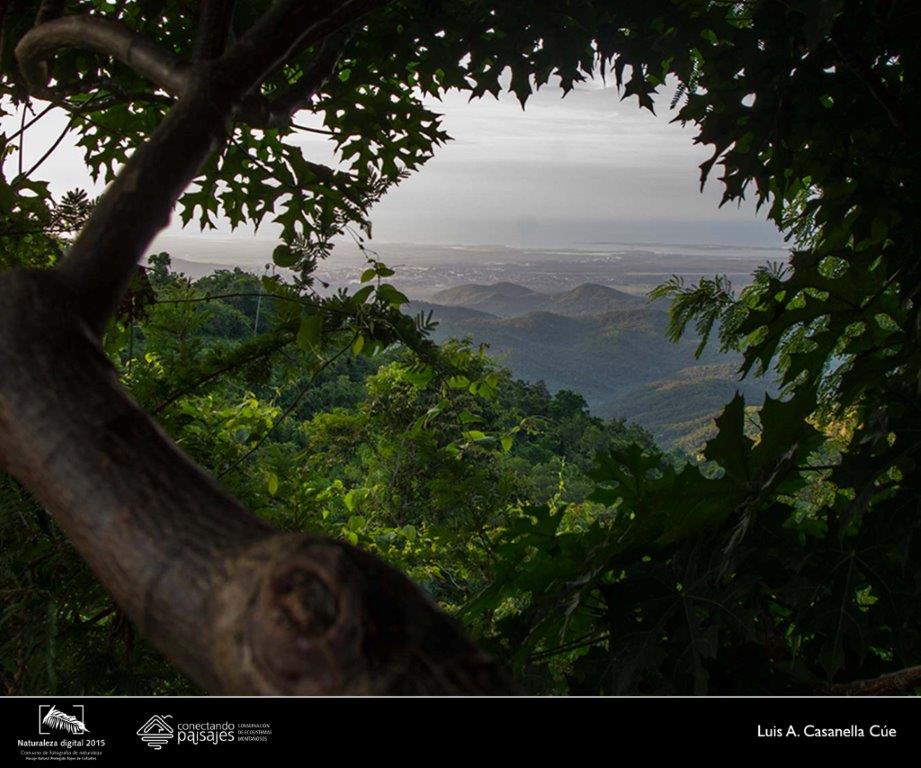
BIOFIN CUBA desarrolla sinergias y propone nuevas interrelaciones con el Proyecto PNUD/GEF “Conectando paisajes”
En la primera semana de octubre 2017, el Grupo Coordinador de BIOFIN-Cuba, sostuvo un encuentro en la sede del PNUD con vistas a revisar el informe trimestral julio-septiembre, así como chequear el desarrollo de las actividades a realizar.
Fue confirmado en el debate la sinergia de diversos proyectos internacionales en implementación en el país con la iniciativa BIOFIN. Especialmente, se analizó su interrelación con el proyecto PNUD/GEF “Un enfoque paisajístico para conservar ecosistemas montañosos amenazados” (“Conectando Paisajes”), dirigido a la protección efectiva de la diversidad biológica ante amenazas actuales y futuras en paisajes de montaña, desde la montaña hasta la costa.
Conectando Paisajes es coordinado por el Instituto de Ecología y Sistemática (IES), perteneciente a la Agencia de Medio Ambiente (AMA) del Ministerio de Ciencia, Tecnología y Medio Ambiente de Cuba (CITMA) con acompañamiento del PNUD. Participan diferentes instituciones del Ministerio de la Agricultura (MINAG), y el CITMA, el Cuerpo de Guardabosques (CGB), el Instituto de Planificación Física (IPF), el Ministerio de Educación Superior (MES), el Ministerio de Cultura (MINCULT), el Ministerio de Turismo (MINTUR) y Organizaciones no Gubernamentales (ONGs). El encuentro, contó con la participación del director del IES, Dr. Armando Payo, y la MSc. Lázara Sotolongo, directora del proyecto.
En el debate existió consenso sobre la necesidad de desarrollar acciones dirigidas a la valoración económica y a la implementación de posibles mecanismos financieros para la conservación y uso sostenible de la biodiversidad.
De acuerdo con la directora de proyecto Conectando Paisajes, el mismo pretende lograr un cambio de paradigma en la conservación de la biodiversidad y gestión de áreas protegidas en Cuba, desde un enfoque de paisaje que integre las áreas protegidas y sus zonas de influencia en sectores productivos.
La iniciativa abarca las Regiones Especiales de Desarrollo Sostenible (REDS): Guaniguanico, Guamuhaya, Bamburanao y Nipe-Sagua-Baracoa, para una cobertura aproximada del 13 por ciento del territorio nacional, que cubre 9 provincias y 29 municipios.
En esas zonas reside el 8 por ciento de la población del país (878,842 habitantes), cuenta con 6 cuencas hidrográficas de interés nacional, contiene el 25,2 por ciento de las áreas boscosas naturales, con un 70 por ciento de especies endémicas y el 55 por ciento de las plantaciones de café y cacao.
Igualmente, se valoró la importancia de dar prioridad y respaldo a las REDS incluidas en el proyecto, que ya registra tres años de existencia, a fin de potenciar el significado de la biodiversidad en los ámbitos natural, social y económico, así como significar el rol del Proyecto PNUD/GEF “Conectando paisajes” en la estrategia de enfrentamiento al cambio climático.
Dentro de los análisis compartidos en torno al proyecto, se valoró el resultado 1 que considera el marco sistémico para la gestión con enfoque de paisaje, su componente 2, dirigido a la efectividad de gestión de áreas protegidas y paisajes y el componente 3 encaminado a los sistemas de producción compatibles con la conservación.
BIOFIN CUBA develops synergies and proposes new interrelations with the UNDP / GEF Project "Connecting landscapes"
In the first week of October 2017, the Coordinating Group of BIOFIN-Cuba, held a meeting at UNDP headquarters to reviewing the quarterly report from July to September, as well as checking the development of the activities to be carried out.
The synergy of several international projects implemented in the country with the BIOFIN initiative was confirmed in the debate, and its interrelation with the UNDP / GEF project "A landscape approach to conserve threatened mountain ecosystems" ("Connecting Landscapes") was analyzed, to the effective protection of biological diversity against current and future threats in mountain landscapes, from the mountain to the coast.
This project is coordinated by the Institute of Ecology and Systematics (IES), belonging to the Environmental Agency (AMA) of the Ministry of Science, Technology and Environment of Cuba (CITMA) with UNDP support. Different institutions participate from the Ministry of Agriculture (MINAG), and the CITMA, the Ranger Corps (CGB), the Physical Planning Institute (IPF), the Ministry of Higher Education (MES), the Ministry of Culture (MINCULT), the Ministry of Tourism (MINTUR) and Non-Governmental Organizations (NGOs). The meeting was attended by the principal of the IES, Dr. Armando Payo, and the MSc. Lázara Sotolongo, project director.
In the debate there was consensus on the need to develop actions aimed at economic valuation and the implementation of possible financial mechanisms for the conservation and sustainable use of biodiversity, in these areas of such interest.
According to the project director, it aims to achieve a paradigm shift in the conservation of biodiversity and management of protected areas in Cuba, from a landscape approach that integrates protected areas and their areas of influence in productive sectors.
The initiative covers the special sustainable development regions (REDS): Guaniguanico, Guamuhaya, Bamburanao and Nipe-Sagua-Baracoa, for an approximate coverage of 13 percent of the national territory, covering 9 provinces and 29 municipalities.
In these areas, 8 percent of the country's population (878,842 inhabitants) resides, has 6 watersheds of national interest, contains 25.2 percent of the natural forest areas, with 70 percent of endemic species and 55 percent of the coffee and cocoa plantations.
The importance of giving priority and support to the REDS included in the project, which is already three years old, was valued in order to enhance the meaning of biodiversity in the natural, social and economic areas, as well as to signify the role of the Project UNDP / GEF "Connecting landscapes" in the strategy of confronting climate change.
Within the shared analyzes around the project, the result 1 that considers the systemic framework for management with a landscape approach, component 2, aimed at effective management of protected areas and landscapes and component 3 aimed at the production systems compatible with conservation.
Categories
Archives
- January 2026 (1)
- December 2025 (2)
- November 2025 (5)
- October 2025 (6)
- September 2025 (2)
- August 2025 (10)
- July 2025 (9)
- June 2025 (5)
- May 2025 (8)
- April 2025 (9)